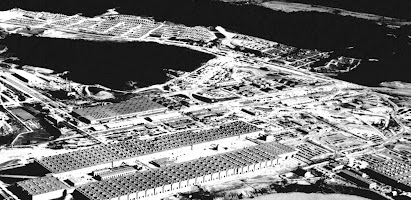In the annals of scientific history, few events have had a more profound impact on the world than the Manhattan Project. This secretive and monumental endeavour brought together some of the brightest minds of the 20th century to unlock the mysteries of nuclear physics and, ultimately, change the course of human history. At the heart of this captivating story lies J. Robert Oppenheimer, the brilliant physicist who played a pivotal role in the development of the atomic bomb. Join us as we journey through the compelling tale of Oppenheimer and the Manhattan Project.
The Genesis of the Manhattan Project
During the dramatic days of World War II, the Allies were embroiled in a harsh fight against Axis forces in the early 1940s. As the war progressed, there became an urgent need for a formidable weapon capable of bringing the conflict to a rapid and definitive end. Because of this compelling need, the United States launched the Manhattan Project, a covert research program aimed solely at building an atomic bomb.
The Mastermind: J. Robert Oppenheimer
At the helm of the Manhattan Project stood the mysterious figure of J. Robert Oppenheimer, a physicist with an exceptional intellect and a profound understanding of quantum mechanics. Oppenheimer, known as the "Father of the Atomic Bomb," was selected to lead this ambitious endeavour due to his unparalleled expertise in nuclear physics.
The Los Alamos Laboratory: A Cradle of Innovation
The centre of the Manhattan Project was established in the isolated New Mexican town of Los Alamos. Here, Oppenheimer worked tirelessly to understand nuclear fission with the assistance of his team of scientists, engineers, and specialists. The Los Alamos Laboratory developed into an epicentre of the invention and ground-breaking research.
The Turning Point: Trinity Test
The crucial time had come after extensive research and development over many years. The Trinity Test was conducted on July 16, 1945, in the deserts of New Mexico. This was the first time in human history that an atomic bomb detonated. The world was permanently altered by the successful test.
Hiroshima and Nagasaki: Unleashing Destruction
The fateful decision to use atomic weapons on the Japanese cities of Hiroshima and Nagasaki in August 1945 brought about the end of World War II. The devastation caused by these bombings was immense, leading to an unparalleled loss of life and ushering in the dawn of the nuclear age.
The Legacy of the Manhattan Project
While the Manhattan Project met its wartime goals, the legacy of its activities continues to echo through the halls of history. The ethical concerns of employing nuclear weapons, as well as the catastrophic repercussions of nuclear warfare, have spurred debates that continue to this day.
The Aftermath: The Cold War and Nuclear Proliferation
The end of World War II marked the beginning of a new era—the Cold War. The United States and the Soviet Union emerged as superpowers, engaging in a tense standoff that lasted for decades. The spectre of nuclear annihilation loomed large, and the world lived under the shadow of the "nuclear deterrence" doctrine.
Oppenheimer's Complex Legacy
J. Robert Oppenheimer's involvement in the Manhattan Project and his subsequent resistance to unrestricted nuclear development have left behind a complicated legacy over the years. Despite his indisputable contributions to science, he struggled with the ethical consequences of his work and the possibility of a global disaster.
The Manhattan Project, led by J. Robert Oppenheimer, remains an unprecedented chapter in scientific and military history. It was a story about great brains, covert operations, and the dawn of the atomic age. While the overwhelming force of the atomic bomb forever changed the world, the narrative of the Manhattan Project serves as a powerful reminder of the delicate balance between technological development and ethical responsibility.
Sources - https://www.thecollector.com/what-was-the-manhattan-project/ and https://www.history.com/topics/world-war-ii/the-manhattan-project




